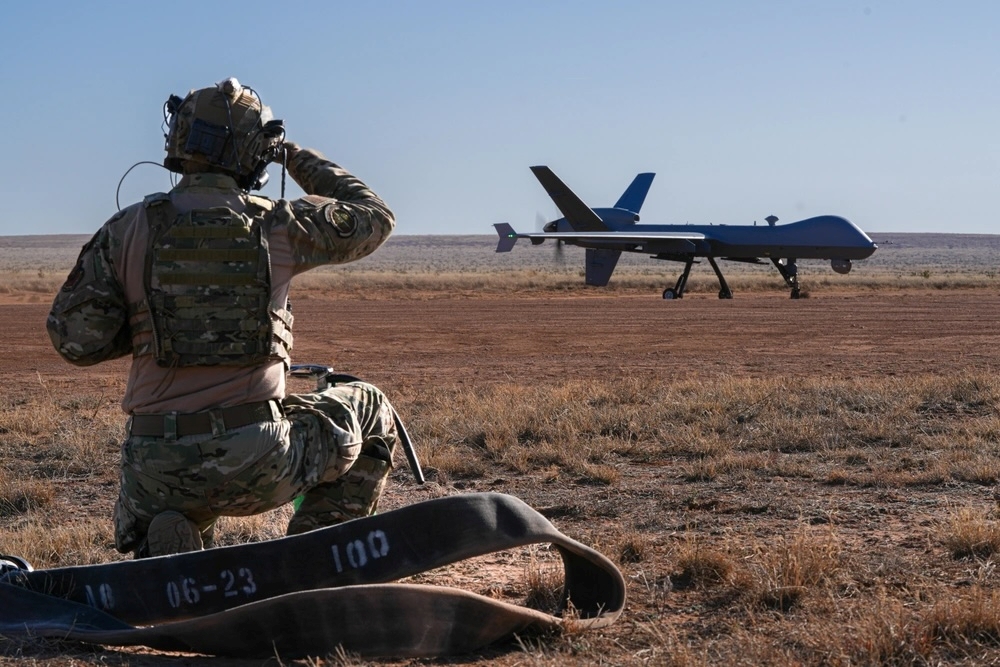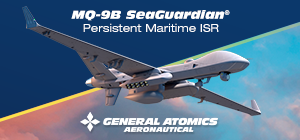
In a significant first for an aircraft that has been in service and hard at work for 20 years, the MQ-9A REAPER has operated from the first time from dirt airstrips as part of an experiment of Agile Combat Employment.
The US Air Force Special Operations Command (AFSOC) landed an MQ-9 on a dirt strip in New Mexico on December 16, 2024, rearmed, refueled, and launched it again. A small team of AFSOC personnel carried out the evolution, keeping in with the ACE strategy which envisions dispersion as a key survivability measure in major conflict against a peer adversary, in particular China.
Small groups of Airmen need to be comfortable delivering combat capability from many different remote or austere operating locations so that they are more difficult to target. The 1st Special Operations Mission Sustainment Team (SOMST), met the REAPER on the ground and prepared it for another mission at the exercise REAPER CASTILLO, which took place at Melrose Air Force Range, New Mexico, near Cannon Air Force Base, hosted by the 65th Special Operations Squadron with the aim of continuing work on creating a lighter, leaner and more agile force.
A pilot and sensor operator controlled the drone from Hurlburt Field, in Florida, more than 1,100 miles away in the east. The USAF won’t say, for security reasons, how many airmen were needed to perform the evolution but says the MQ-9A managed to operate from the dirt strip without modifications.
Despite being uncrewed in flight, the REAPER started out as a very manpower-intensive platform which required local control for take-off and landing and a hefty complement of supporting personnel. It is only since 2021 that the USAF has grown comfortable with the REAPER landing itself using an autopilot function known as the Automatic Takeoff and Landing Capability (ATLC). This has resulted in a reduction of some 55 people at the flight line, and has reduced the amount of equipment that needs to be deployed.
USAF and AFSOC have been working for several years now to demonstrate MQ-9 operations with minimal logistic footprint and in previous events in New Mexico and in the Pacific theatre saw the amount of gear and personnel shrunk to as little as a pallet and a half of stores and 10 Airmen, enabling easy movement of the MQ-9 ground element via CV-22 OSPREY or C-130.
To drive down the manpower requirement further, in 2024 a demonstration at Cannon AFB saw a single crew control 3 MQ-9s simultaneously. Operations away from established runways is another step towards making the MQ-9 more survivable, deployable and unpredictable. To reduce the vulnerability of the MQ-9 when in flight, efforts are focused on integration self-defence pods and on making the MQ-9 a “mothership” for smaller drones that can fly ahead and scout high risk areas. This was also demonstrated in 2024 with the in-flight launch of Anduril ALTIUS 600 tube-launched drones.
The dirt runway used in this demonstration was in excellent material state and at the moment the MQ-9 still needs a considerable length of runway to operate safely. GA-ASI has notoriously been working on the MOJAVE demonstrator with much enhanced short take off and landing characteristics and plans to bring those features from the MOJAVE onto the MQ-9 SKY GUARDIAN (PROTECTOR in RAF service) to give it STOVL abilities sufficient to enable it to take off and land even on ships, such as LHA / LHDs of the USMC and larger.
MOJAVE was first demonstrated landing and taking off from the Royal Navy carrier HMS PRINCE OF WALES in 2023. In late 2024 MOJAVE also took off (but did not land back on) the much smaller LHD DOKDO of the South Korean navy.








.png)
